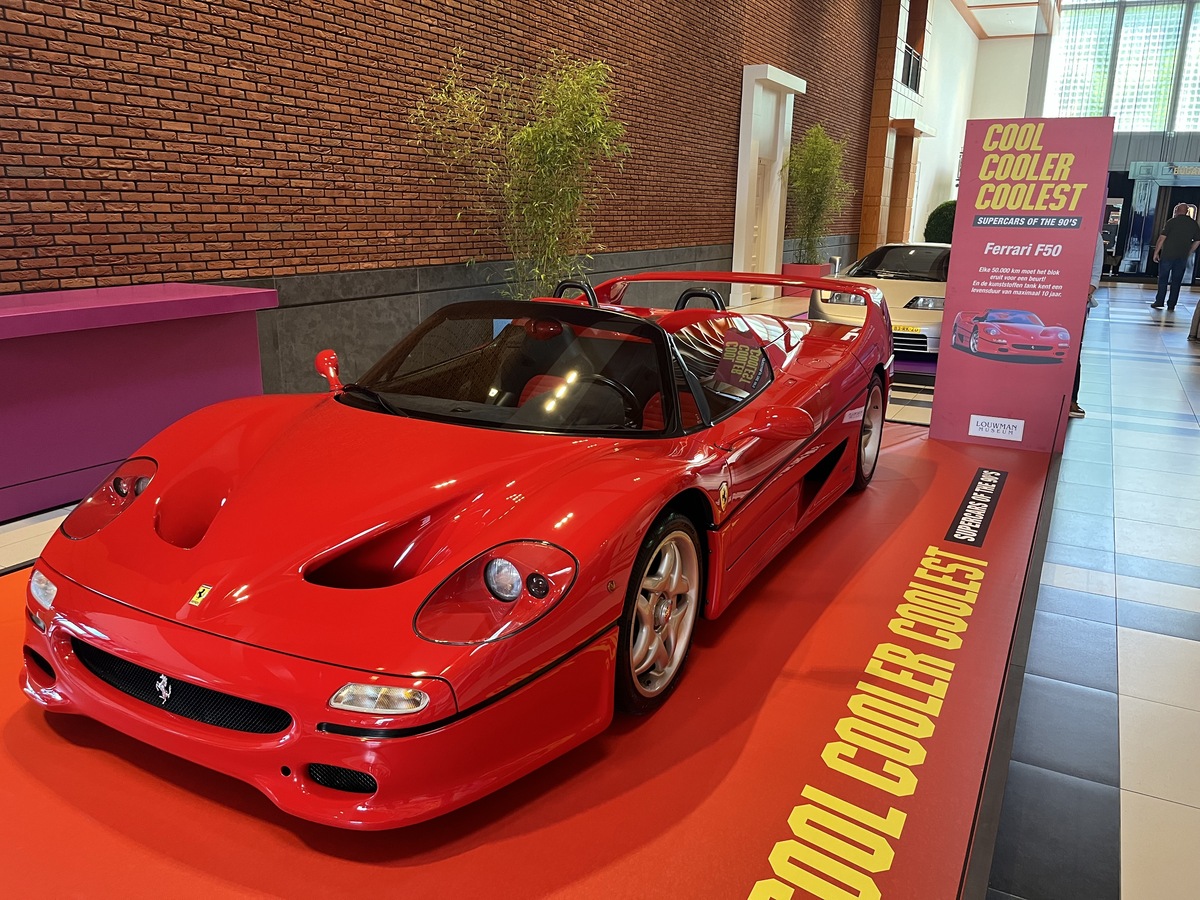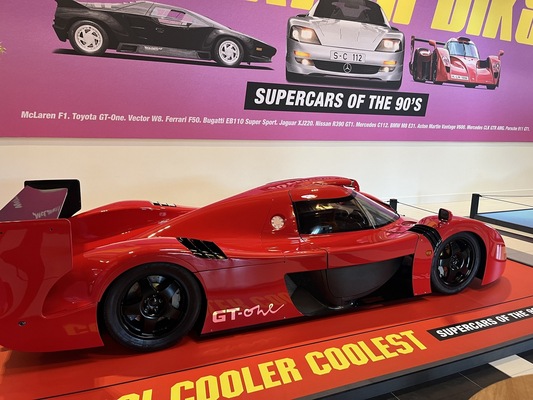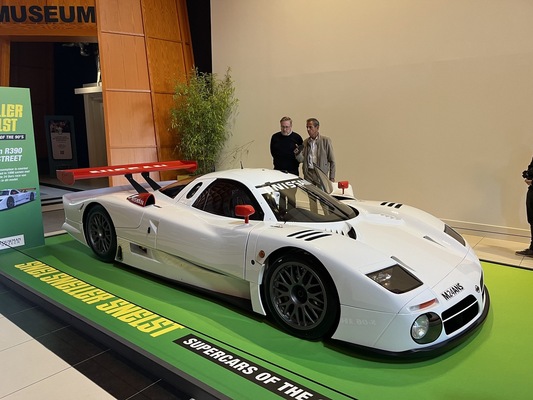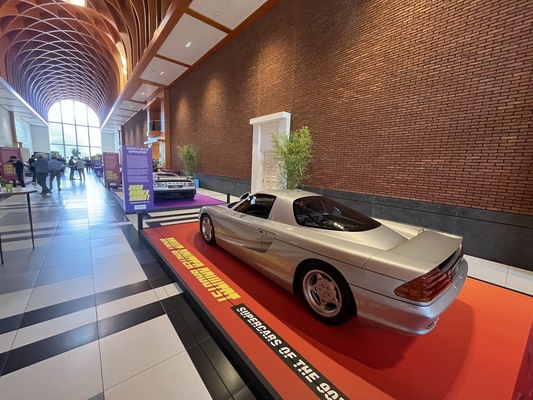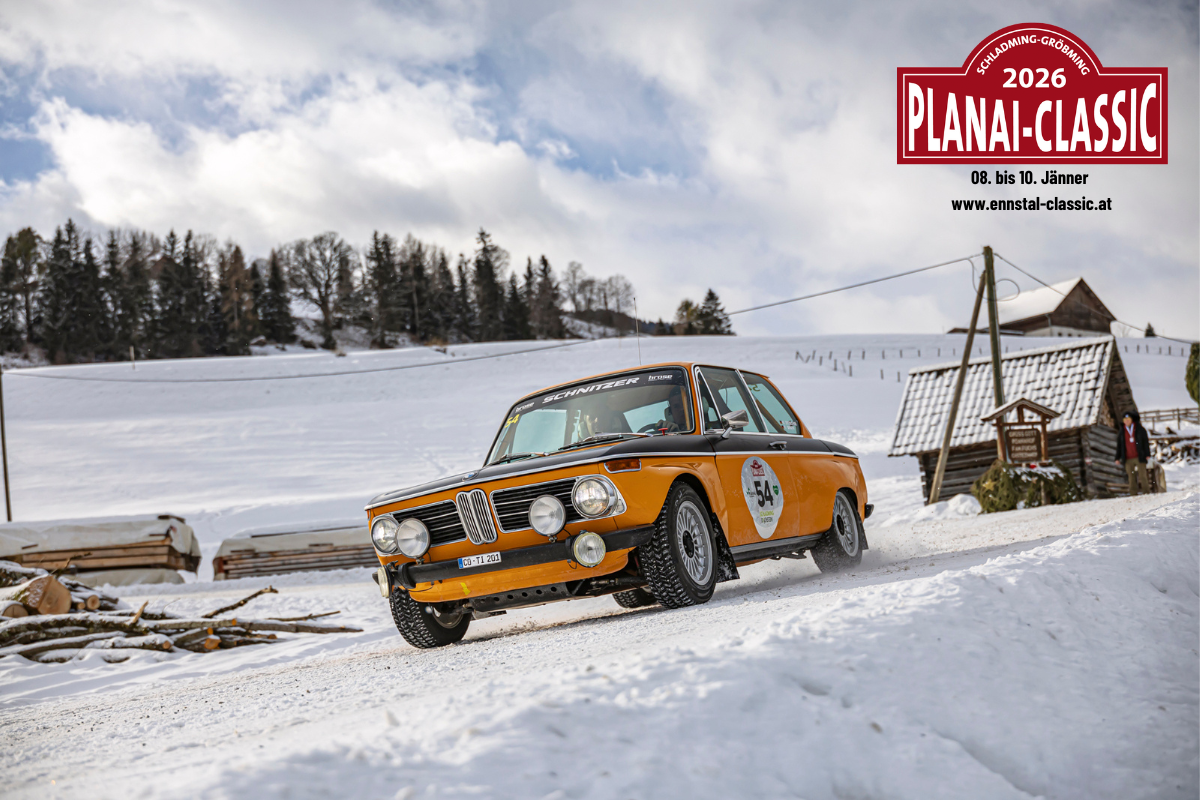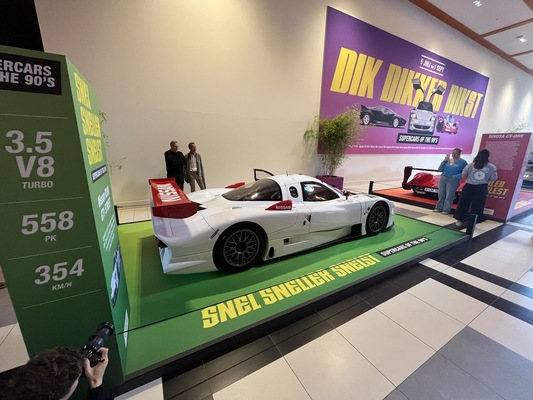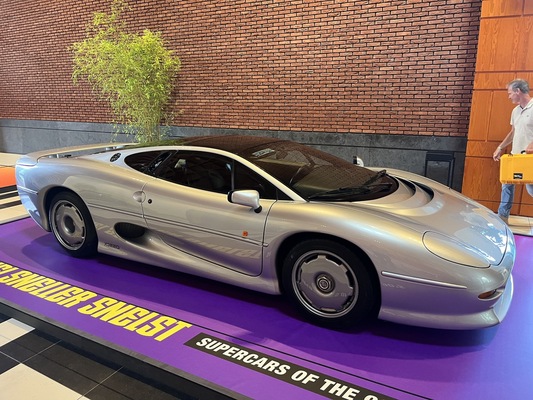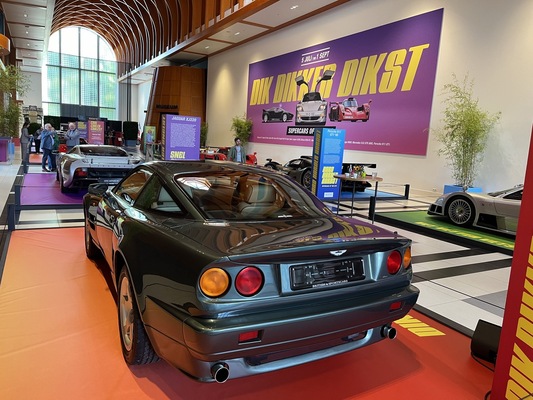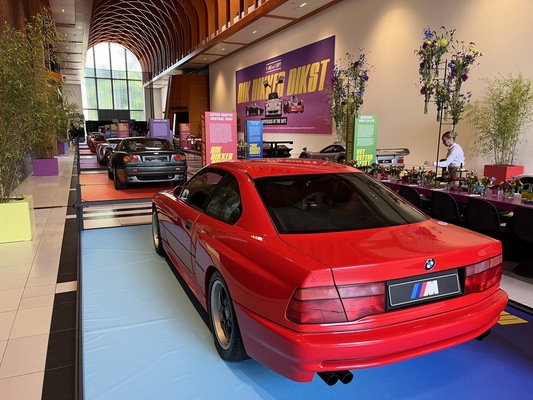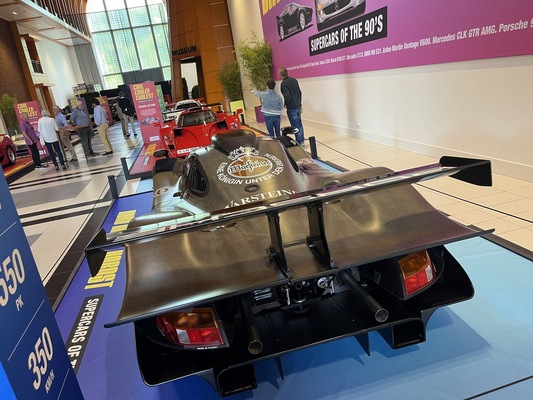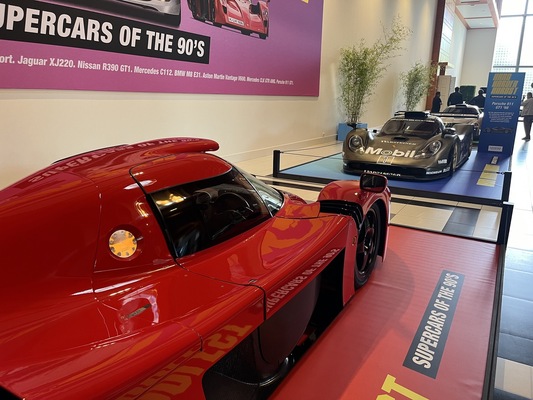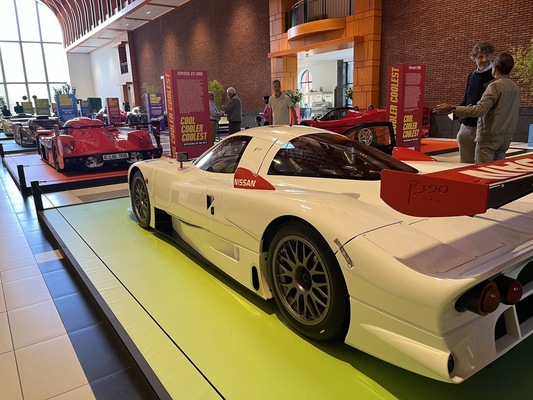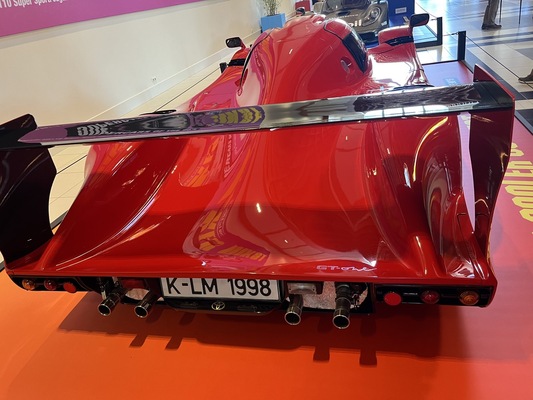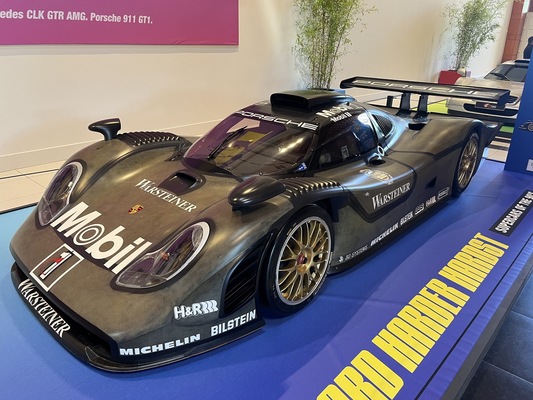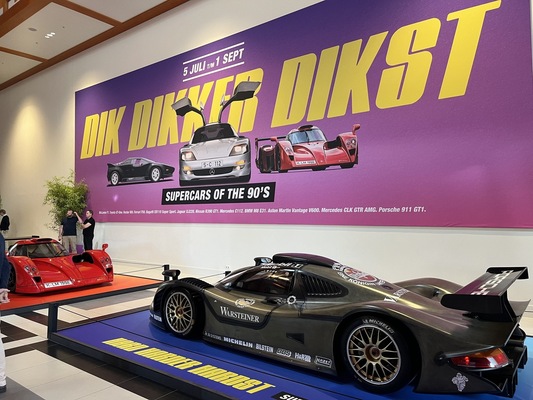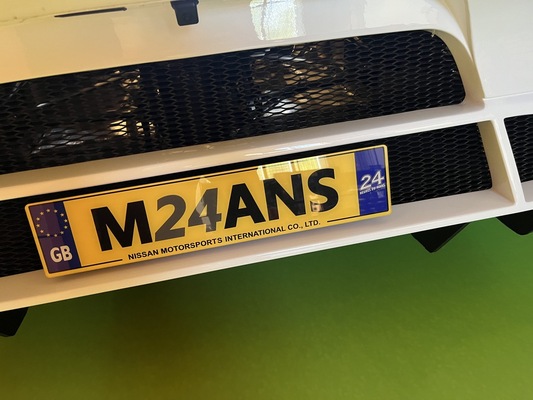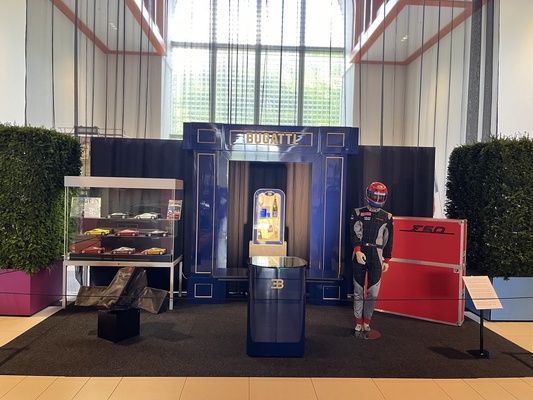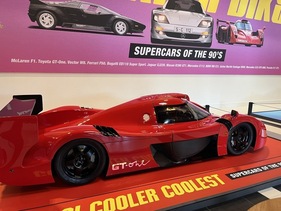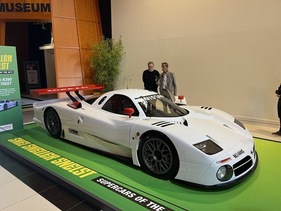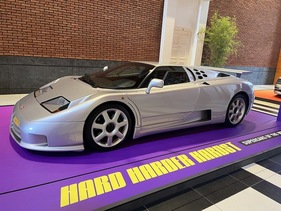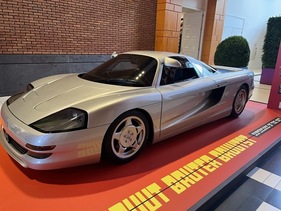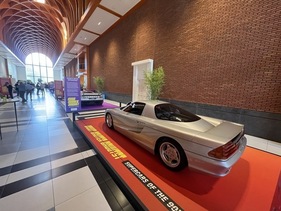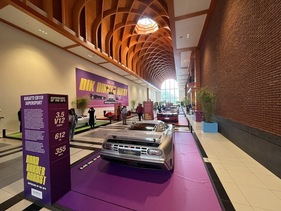"Cool, cooler, coolest" - there is no shortage of superlatives in the current special exhibition at the Louwman Museum in The Hague, which opened last Friday and is on display until September 1. "Super sports cars of the nineties" is the theme that led to a fascinating exhibition.
"These cars have never been on display in Europe in this combination, perhaps not even worldwide." Ronald Kooyman, Director of the Louwman Museum, is visibly proud of the special exhibition that his team, led by curator Sjoerd van Bilsen, has put together. The exhibition theme is also likely to appeal to a younger audience in particular, who - apart from true specialists and connoisseurs - were probably less interested in last year's special exhibition on cyclecars and voiturettes from the early 20th century. However, younger generations (and the young at heart) will now get their money's worth.

"We see it as our job to share all facets and eras of automotive evolution with our visitors. This also includes the recent past," says Kooyman. "The nineties saw a boom in high-performance sports cars, the foundations of which had already been laid in the previous decade. Numerous new brands were founded. However, the financial crisis of 1992/1993 made car enthusiasts rather cautious, so that orders for super sports cars collapsed, leading to the bankruptcy of new brands or the premature end of ambitious projects."
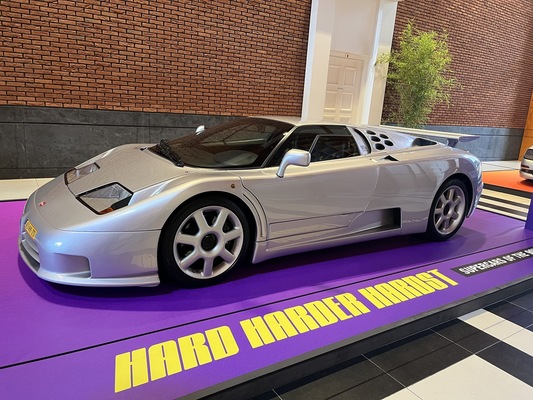
Nevertheless, there were numerous exciting and impressive super sports cars in the last decade of the 20th century. What criteria did the Dutch museum use to select them? "For us, the term 'supercar' is defined by a limited number of units, an engine output of at least 500 hp and a top speed of over 300 km/h," explains Kooyman. "Within this framework, we show a range of models, which we have divided into four different categories: Production models in unlimited numbers, those with limited numbers, homologation vehicles and prototypes."
Barely tamed racing cars
Anyone entering the impressive entrance hall of the museum, which is reminiscent of a cathedral, not least due to its architecture, height and acoustics, will immediately see four cars on the back wall that would have deserved a special exhibition on their own. These are homologation models for GT racing, which, thanks to the founding of the BPR series by the initiators Jürgen Barth, Patrick Peter and Stéphane Ratel, experienced an enormous boom not only in Europe, but also beyond. The regulations officially stipulated a road-going production model, although only one such road version of many racing cars was built - if at all...
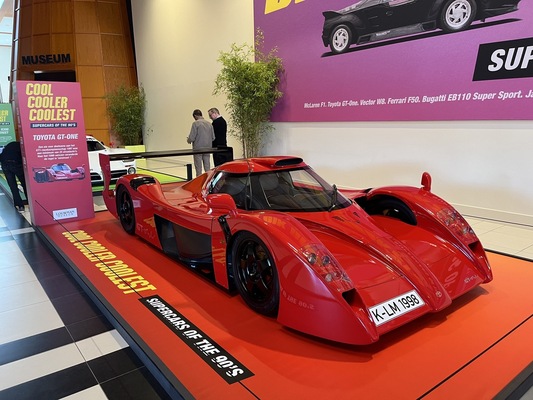
In the middle are the road-going version of the Toyota GT-One, with which the Japanese manufacturer competed at Le Mans in 1998 and 1999 (and again failed to achieve the much-anticipated success, which, as is well known, did not materialize until 2018), and the counterpart based on the Porsche 911 GT1, also from 1998. Despite the racing livery on the bare carbon fibre skin, this is also a road-going version of the vehicle with which Porsche won Le Mans in 1998. It was a very important success in the year of the brand's 50th anniversary, in which it otherwise lost out to the superior Mercedes-Benz in the FIA GT Championship. The Toyota (registration number: K-LM 1998) comes from the collection of Toyota Gazoo Racing at the European headquarters in Cologne-Marsdorf. The Porsche comes from the factory collection in Zuffenhausen.

To the left of the Toyota is a white Nissan R390 GT1, also with a matching license plate ("M24ANS"). The vehicle is owned by former French Nissan works driver Eric Comas, who had the right to purchase written into his contract. It is an original race car that competed in the 1998 24 Hours of Le Mans and underwent a two-year conversion to make it suitable for road use: Headlights, different windows, modified cooling and a horn were among the measures. Comas, who was present at the opening of the exhibition, has owned the car for several years. "I've driven it maybe 1,000 kilometers since then," he says. "Nissan used to cover the costs. It's not a cheap pleasure. But it's great fun! And the reactions are incredible. Young people believe that the car only existed on the Playstation, they can't even imagine that it exists in real life!"
Actually roadworthy
The fourth homologation vehicle is the road-going version of the Mercedes-Benz CLK-GTR from 1997, which is on loan from the German national car museum "The Loh Collection". For the sports department at Daimler-Benz, GT racing was a new field of activity in 1997 after the sudden end of the DTM/ITC at the end of the 1996 season, when Alfa Romeo and Opel withdrew and the end of the series was sealed. While Porsche had already caused quite a shock in the BPR scene in 1996 with the 911 GT1, the CLK raised the bar at least one notch higher in the renamed FIA GT Championship the following year. And unlike many other manufacturers, AMG actually produced a small series of homologation vehicles, which were later even available as a convertible.

The three production models on display in the exhibition are an Aston Martin Vantage V600, a Bugatti EB110 Super Sport and a Vector W8. The "limited contingents" are a Ferrari F50, a Jaguar XJ220 and a McLaren F1. Two prototypes round off the selection: the BMW M8 as a high-performance version of the 850i, which never made it into series production, but whose V12 engine was later used in the McLaren F1; and the Mercedes-Benz C 112, of which a small series was initially planned at Sauber in Hinwil, but which was then withdrawn by the Board of Management.

Does the museum team still have any wishes? "I am happy for every car that is here, and I am not sad for cars that are not here," says curator Sjoerd van Bilsen. "Of course, a Cizeta Moroder would have been cool, and some people might want to see a Lamborghini Diablo. But I think we have put together a very nice selection here that is absolutely worth seeing." We can fully endorse this after visiting the museum. A visit to the Louwman Museum, which is one of the best in the world, is recommended anyway, but even more so with this special exhibition! And if you're wondering why the information panels on the cars are only in Dutch, you'll be surprised: After all, the technical data and performance specifications are understandable in any language.
More information: www.louwmanmuseum.nl
